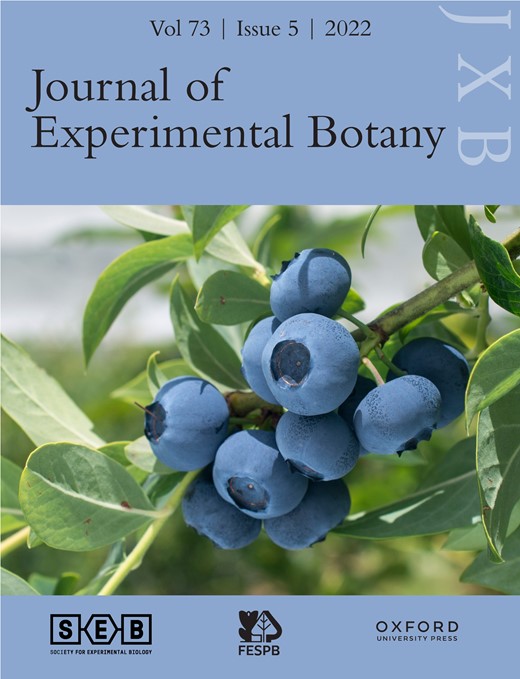Ver ítem
- xmlui.general.dspace_homeCentros Regionales y EEAsCentro Regional Buenos Aires NorteEEA PergaminoArtículos científicosxmlui.ArtifactBrowser.ItemViewer.trail
- Inicio
- Centros Regionales y EEAs
- Centro Regional Buenos Aires Norte
- EEA Pergamino
- Artículos científicos
- Ver ítem
Breeding effects on canopy light attenuation in maize: a retrospective and prospective analysis
Resumen
The light attenuation process within a plant canopy defines energy capture and vertical distribution of light and nitrogen (N). The vertical light distribution can be quantitatively described with the extinction coefficient (k), which associates the fraction of intercepted photosynthetically active radiation (fPARi) with the leaf area index (LAI). Lower values of k correspond to upright leaves and homogeneous vertical light distribution, increasing
[ver mas...]
The light attenuation process within a plant canopy defines energy capture and vertical distribution of light and nitrogen (N). The vertical light distribution can be quantitatively described with the extinction coefficient (k), which associates the fraction of intercepted photosynthetically active radiation (fPARi) with the leaf area index (LAI). Lower values of k correspond to upright leaves and homogeneous vertical light distribution, increasing radiation use efficiency (RUE). Yield gains in maize (Zea mays L.) were accompanied by increases in optimum plant density and leaf erectness. Thus, the yield-driven breeding programs and management changes, such as reduced row spacing, selected a more erect leaf habit under different maize production systems (e.g., China and the USA). In this study, data from Argentina revealed that k decreased at a rate of 1.1% year–1 since 1989, regardless of plant density and in agreement with Chinese reports (1.0% year–1 since 1981). A reliable assessment of changes in k over time is critical for predicting (i) modifications in resource use efficiency (e.g. radiation, water, and N), improving estimations derived from crop simulation models; (ii) differences in productivity caused by management practices; and (iii) limitations to further exploit this trait with breeding.
[Cerrar]

Autor
Lacasa, Josefina;
Ciampitti, Ignacio A.;
Amas, Juan Ignacio;
Curín, Facundo;
Luque, Sergio F.;
Otegui, María Elena;
Fuente
Journal of Experimental Botany 73 (5) : 1301-1311. (March 2022)
Fecha
2022-03
Editorial
Oxford University Press
ISSN
0022-0957
1460-2431 (online)
1460-2431 (online)
Formato
pdf
Tipo de documento
artículo
Palabras Claves
Derechos de acceso
Restringido
 Excepto donde se diga explicitamente, este item se publica bajo la siguiente descripción: Creative Commons Attribution-NonCommercial-ShareAlike 2.5 Unported (CC BY-NC-SA 2.5)
Excepto donde se diga explicitamente, este item se publica bajo la siguiente descripción: Creative Commons Attribution-NonCommercial-ShareAlike 2.5 Unported (CC BY-NC-SA 2.5)

